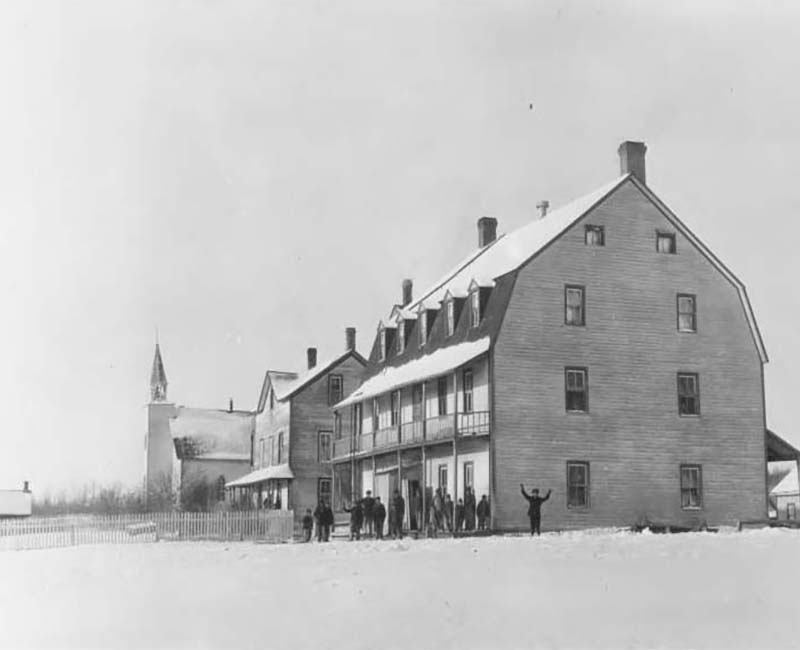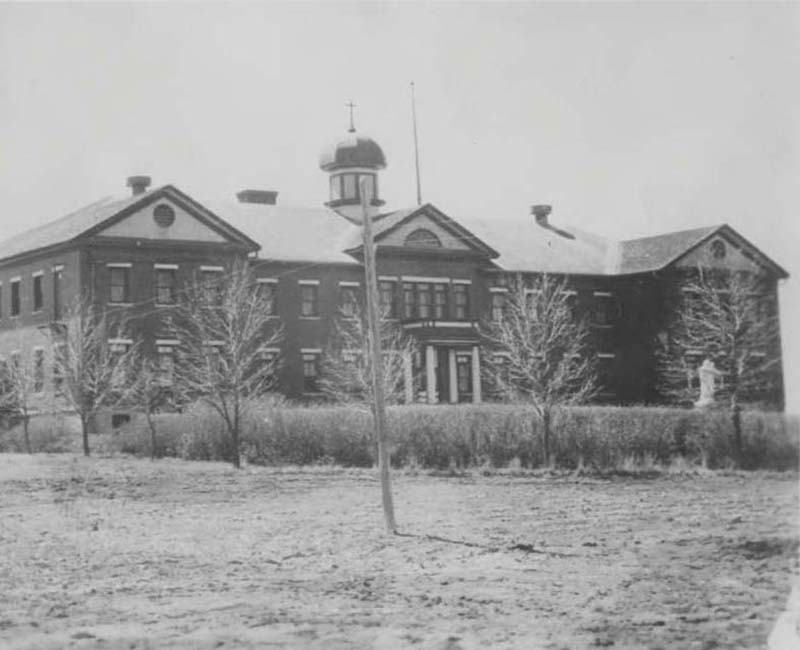Residential School History
For a period of more than 150 years, First Nations, Inuit and Métis Nation children were taken from their families and communities to attend schools which were often located far from their homes. More than 150,000 children attended Indian Residential Schools. Many never returned.
The first church-run Indian Residential School was opened in 1831. By the 1880s, the federal government had adopted an official policy of funding residential schools across Canada. The explicit intent was to separate these children from their families and cultures. In 1920, the Indian Act made attendance at Indian Residential Schools compulsory for Treaty-status children between the ages of 7 and 15.
The Truth and Reconciliation Commission of Canada (TRC) concluded that residential schools were “a systematic, government- sponsored attempt to destroy Aboriginal cultures and languages and to assimilate Aboriginal peoples so that they no longer existed as distinct peoples.” The TRC characterized this intent as “cultural genocide.”
The schools were often underfunded and overcrowded. The quality of education was substandard. Children were harshly punished for speaking their own languages. Staff were not held accountable for how they treated the children.
We know that thousands of students suffered physical and sexual abuse at residential schools. All suffered from loneliness and a longing to be home with their families.
The schools hurt the children. The schools also hurt their families and their communities. Children were deprived of healthy examples of love and respect. The distinct cultures, traditions, languages, and knowledge systems of First Nations, Inuit and Métis peoples were eroded by forced assimilation.
The damages inflicted by Residential Schools continue to this day.
For a great many Survivors, talking about their experiences in residential schools means reliving the traumas they experienced. For years, many told no one about what they had endured.
In 1996, the landmark Royal Commission on Aboriginal Peoples drew attention to the lasting harm that was done by the residential schools. A growing number of Survivors and their descendants came forward to tell their stories and demand action.
Through their courage and persistence, an eventual legal settlement was reached between Survivors, the Assembly of First Nations, Inuit representatives and the defendants, the federal government and the churches responsible for the operation of the school. The Indian Residential Schools Settlement Agreement included:
- A commitment to a public apology. On June 11, 2008 then Prime Minister Stephen Harper issued a formal Statement of Apology on behalf of Canada. The Apology stated that, “There is no place in Canada for the attitudes that inspired the Indian residential schools system to ever again prevail.”
- Financial compensation to Residential School Survivors including a lump sum Common Experience Payment, the Independent Assessment Process for the most serious forms of individual abuse, and a Commemoration Fund.
- The creation of the Truth and Reconciliation Commission to inform all Canadians about what happened in the Residential Schools by witnessing and documenting the truth of Survivors, families, communities and anyone personally affected by the Schools. The TRC issued an extensive report on the history of residential schools as well as Calls to Action and Principles of Reconciliation.
It is important to acknowledge that the Settlement Agreement was not comprehensive. The Métis Nation Survivors were not part of the Settlement Agreement. A separate settlement was reached with Survivors from Newfoundland and Labrador in 2016. A settlement agreement with Survivors of federal Indian Day Schools was not reached until 2019.
The NCTR is carrying on key aspects of the TRC’s work, including safeguarding and adding to the archive of Survivor statements and other records and building a registry of the thousands of children known to have died in residential schools.
In September 2020, Parks Canada announced that Residential Schools had been designated an event of national historical significance. Such designations mark aspects of Canadian history, whether positive or negative, that have had a lasting impact on shaping Canadian society.
The Canadian Parliament passed legislation, Bill C-5, to create a national day of commemoration to honour residential school Survivors and promote understanding of residential school history. The TRC called for such commemoration in its Calls to Action (Call to Action 80). The first National Day for Truth and Reconciliation took place September 30, 2021.
NCTR’s spirit name – bezhig miigwan, meaning “one feather”.
Bezhig miigwan calls upon us to see each Survivor coming to the NCTR as a single eagle feather and to show those Survivors the same respect and attention an eagle feather deserves. It also teaches we are all in this together — we are all one, connected, and it is vital to work together to achieve reconciliation.





